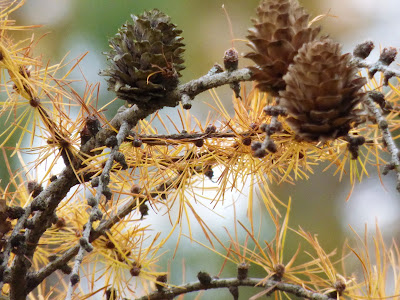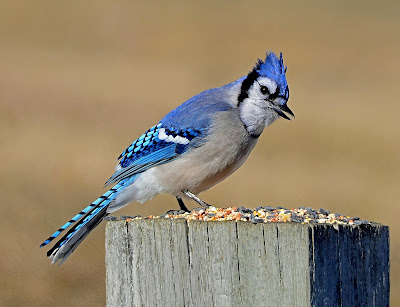Tamaracks are rebels in the tree world
By
I drove out to Cooperstown, N.Y., to visit my son this weekend. It was beautiful driving through the Berkshires into northern New York. The trees were mostly bare except for brilliant stands of red maple and deep orange oak and then, every once in a while, blazes of almost fluorescent yellow tamarack.
Tamaracks are rebels in the tree world. We all easily categorize trees as either evergreen or deciduous. The evergreens are mostly conifers; needle-leaved, cone-bearing trees like pines, firs and hemlocks. The deciduous trees are the ones that draw the leaf peepers to New England - scarlet maples, orange and brown oaks, yellow birches, beech and poplar; broad-leaved trees that turn color and then drop their leaves in winter. Tamaracks are nonconformists to this dichotomy because they are conifers that turn color and drop their needles every winter.
I knew that tamaracks grew in the north, but didn’t realize the full extent of their range until looking them up in my newest favorite book “The Arctic Guide: Wildlife of the Far North,” by Sharon Chester. Tamaracks range from central Alaska to Newfoundland south into the north eastern United States. They like wet places - peat bogs and swamps.
Tamaracks are weird because they seem to follow different rules from other trees. As you head north, more and more trees become evergreen whereas in the temperate parts of the planet, most trees drop their leaves. Needle-leaved conifers are adapted to dry, wintry conditions by having tough needle-shaped leaves that conserve moisture during dry (and frozen winter) conditions while retaining their leaves so that they can photosynthesize whenever there is sun. Deciduous trees have a different strategy, they drop their relatively fragile leaves in the autumn to help protect against water loss in the winter (when water is frozen and inaccessible). These trees put a significant amount of energy into making new leaves in the spring that can burst forth and start photosynthesizing as it begins to warm up. One reason scientists think the deciduous strategy doesn’t work in the far north is because there aren’t enough nutrients available to support this fast growth in the spring. But, then we have our rebel tamaracks — they drop their soft and fragile (more like a deciduous leaf than a tough, resistant evergreen needle) needle-shaped leaves in the fall and seem to do just fine growing them back every spring. This definitely doesn’t fit our model very well, but they seem to do just fine.
The name “tamarack” comes from an Algonquian word meaning “wood used for snowshoes” and the other common name around here, “hackmatack” comes from an Abenaki word for the same. Tamarack wood is hard and durable, great for snowshoes, and, that other iconic Native American transportation device - the birch bark canoe - was often stitched together using tamarack roots. Tamarack wood is also used for the more mundane telephone poles, railroad ties and fence posts.
Today I felt winter for the first time this season - it was cold and raw and beautiful. Tamaracks are common in the boreal forest. Seacoast New England (and upstate New York) are the balmy south to those boreal forests, yet, as the tamaracks blazed yellow amongst the bare gray maples and stark white birch, I was reminded that I live in the north and like the tamarack, whatever my adaptations, I need to be prepared for the coming winter.




Comments
Post a Comment